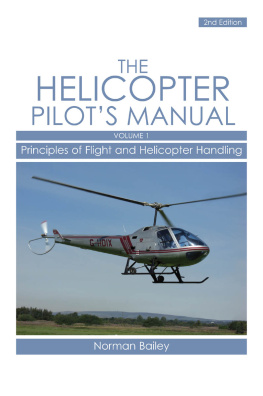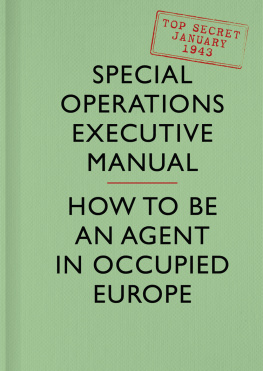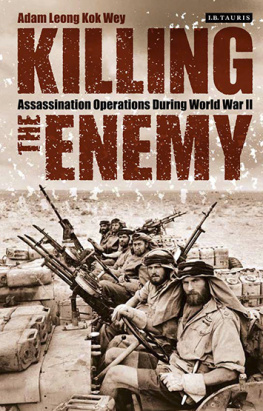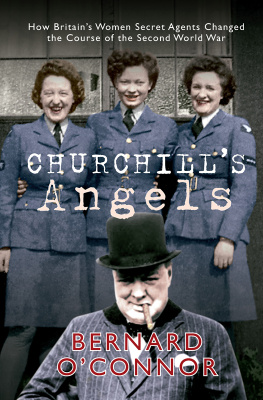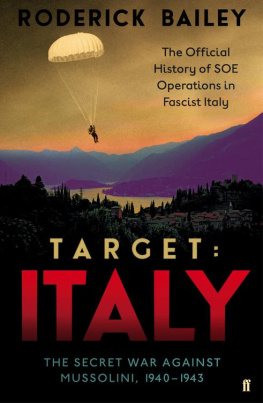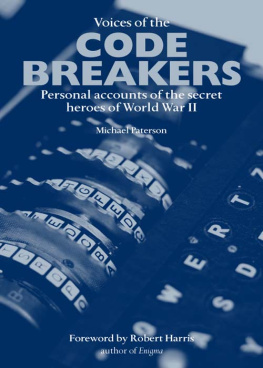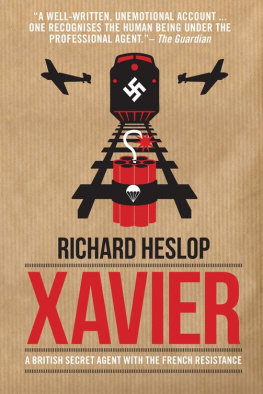FORGOTTEN
VOICES
This eBook is copyright material and must not be copied, reproduced, transferred, distributed, leased, licensed or publicly performed or used in any way except as specifically permitted in writing by the publishers, as allowed under the terms and conditions under which it was purchased or as strictly permitted by applicable copyright law. Any unauthorised distribution or use of this text may be a direct infringement of the author's and publisher's rights and those responsible may be liable in law accordingly.
ISBN 9781407022369
Version 1.0
www.randomhouse.co.uk
1 3 5 7 9 10 8 6 4 2
Published in 2008 by Ebury Press, an imprint of Ebury Publishing
A Random House Group Company
Introduction Sebastian Faulks 2008
Text Roderick Bailey and Imperial War Museum 2008
Photographs Imperial War Museum 2008
Roderick Bailey has asserted his right to be identified as the author of this Work inaccordance with the Copyright, Designs and Patents Act 1988
This electronic book is sold subject to the condition that it shall not by way of trade or otherwise, be lent, resold, hired out, or otherwise circulated without the publisher's prior consent in any form other than that in which it is published and without a similar condition including this condition being imposed on the subsequent purchaser
The Random House Group Limited Reg. No. 954009
Addresses for companies within the Random House Group can be found atwww.randomhouse.co.uk
A CIP catalogue record for this book is available from the British Library
ISBN: 9781407022369
Version 1.0
To buy books by your favourite authors and register for offers visit www.rbooks.co.uk
Author's Preface
The Imperial War Museum has long been concerned with preserving therecords and memories of men and women with experience of recent war andconflict. Forgotten Voices of the Secret War draws on hundreds of hours ofinterviews in the museum's sound archive that tell of the exploits of theSpecial Operations Executive, a secret British organisation set up early in theSecond World War to encourage subversion and carry out sabotage in enemyoccupiedterritory.
During its short, six-year existence, SOE helped channel vast amounts ofarms and supplies to tens of thousands of resistance workers and guerrillas. Itdispatched hundreds of its own agents, men and women, to provide trainingand encouragement, destroy key installations and harass enemy forces. InEurope, SOE was the principal Allied force engaged in stimulating andsupporting resistance movements. By the end of the war, its reach was globaland its deeds ranked among some of the most daring and dramatic carried outby Allied forces.
What follows is a narrative history of SOE told through personaltestimonies: snapshots of life in SOE and of the cloak-and-dagger work inwhich agents engaged. With official permission, almost two hundred survivorstell their stories here, speaking freely about their experiences and bringingfresh perspectives to bear on this remarkable organisation. The popular imageof SOE may remain dominated by the efforts and sacrifices of its agents inoccupied France, but the museum's oral history recordings, hitherto barelytapped, reflect very fully the spread and diversity of SOE's activities and thevariety of personnel involved. Interviewees include Britons and foreignnationals; civilians and servicemen; officers and other ranks; instructors whotaught agents specialist skills; technicians who developed specialist weaponsand equipment; staff at secret headquarters as far apart as London, Cairo andColombo; aircrew and naval personnel who transported agents and stores intooccupied territory; agents who were dispatched to attack specific targets, fromvital enemy lines of supply to Germany's atomic bomb plans; agents who weresent out to arm, train and fight alongside groups as different as the Frenchresistance, partisans in Yugoslavia and tribes in the Burmese jungle; andagents who survived brutal treatment after falling into enemy hands. Indeed,this book seeks to underline both the complexities of SOE and the realities ofbehind-the-lines work, from the terrible risks run to the appalling reprisals onoccupied populations which agents' actions could precipitate. There arestories here of treachery and tragedy and of some of SOE's greatest disasters.There are tales, too, of the dilemmas encountered as SOE sought to work withindividuals and groups focused as much on civil war and revolution as onfighting the Axis.
Roderick Bailey
Acknowledgements
My first acknowledgement must be to the former members of SOE and relatedunits who have agreed over the years to share their memories with theImperial War Museum.
I would next like to highlight the contribution made to this book by theGerry Holdsworth Special Forces Charitable Trust, whose generous support ofthe museum's SOE collections allowed me to search for and interview a numberof the men and women who tell their stories here. I am also grateful toDuncan Stuart and Christopher Woods, former SOE Advisers at the Foreign& Commonwealth Office, for help with my search for potential interviewees.
At the Imperial War Museum, I would like to thank Margaret Brooks, RichardMcDonough and John Stopford-Pickering of the Sound Archive, RoderickSuddaby and Amanda Mason of the Department of Documents, Alan Wakefieldand Louise Macfarlane of the Photo Archive and Liz Bowers, PublicationsManager, and her staff. Thank you to Terry Charman for taking the time andtrouble to check, as far as possible, the factual accuracy of the final text. I amindebted, too, to Dr Conrad Wood, who recorded a good many of the interviewsquoted in this book. That the Sound Archive has become the extraordinaryprimary source it is today is due in no small part to him.
Joshua Levine and Lyn Smith gave me valuable advice on how to researchand structure an oral history book like this. For help with transcribing interviews,I am grateful to Chris Bailey, Judy Bailey and Jill Merrett. Fordouble-checking and correcting my French, German and Albanian, I wouldlike to thank Alexandra Pesch, Judith Moellers and Gillian Gloyer.
At Ebury, I am grateful to Ken Barlow, my editor, and Jake Lingwood fortheir patience and enthusiastic support.
Finally, I would like to thank my agent, Gillon Aitken, and Sebastian Faulks.
Introduction
by Sebastian Faulks
The story of the Special Operations Executive, the secret army set up byWinston Churchill at the low point of the Second World War to 'set Europeablaze', is one that, however much you know about it, never loses its power tomake you gasp in admiration, amazement, humour and disbelief. You couldargue that in its mixture of cussedness, heroism and amateurishness, SOEepitomised all the most memorable aspects of the British war effort.
Memoirs can be unreliable, often tending to vainglory, reticence or deceit;official accounts can also be defective. All the more reason to value the oralwitness collected by the Imperial War Museum, a pungent sample of whichhas been selected by Roderick Bailey. 'I was invited, aged just over 21,'recalled Julian Amery, 'to start a revolution in Albania against the Italiansand given a budget of about 50,000 to get on with it.' That is the authenticSOE tone: 'Don't know what I'm doing, let's start tomorrow.' But later,Amery touches on the contribution made by even the most harum-scarumSOE operations: 'Even if we couldn't help these countries, if we could divertthe Germans from what they were doing or planning to do against us, thatwould be a plus.'
The training was tough and sometimes hilarious: Outward Bound with atouch of Ealing comedy. At its best, as in the intensive month in theHighlands, it was not only good practical preparation, but also gave agentsthe sort of other-worldly confidence they would need in the field. Childishfear persisted. Robert Ferrier recalled that in order to shame the more timidmen into making a trial parachute jump, dispatchers made sure the traineewomen jumped first. No




